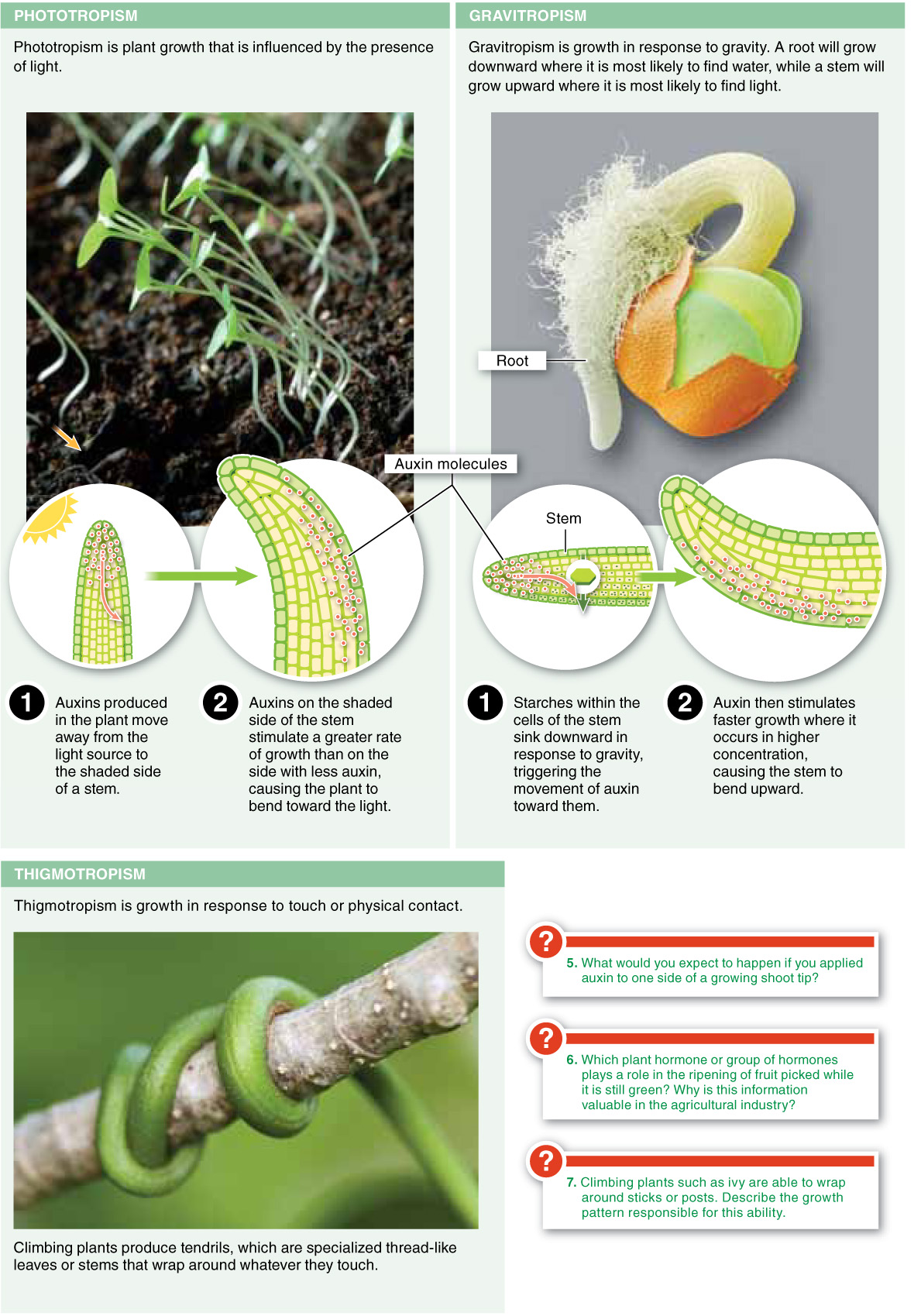19.8–19.10: External cues trigger internal responses.
788
Plants have a variety of growth patterns known as tropisms by which they grow toward or away from various environmental stimuli.

Question 19.18
Which hormone or group of hormones stimulates the ripening of fruit?
- a) auxins
- b) ethylene
- c) cytokinins
- d) gibberellins
- e) abscisic acid

Question 19.19
Which plant hormone or group of hormones is responsible for bud and seed dormancy?
- a) auxins
- b) ethylene
- c) cytokinins
- d) gibberellins
- e) abscisic acid

Question 19.20
Which hormone or group of hormones is primarily synthesized in the roots and travels to other regions of the plant?
- a) cytokinins
- b) gibberellins
- c) 2,4-
D - d) auxins
- e) cytochromes

Question 19.21
Which of the following reverses the inhibitory effects of auxin on lateral buds?
- a) abscisic acid
- b) cambium
- c) ethylene
- d) gibberellin
- e) cytokinin

789

Question 19.22
Phototropism in plants is:
- a) a process that produces glucose.
- b) caused by ethylene.
- c) mediated by cytokinins.
- d) the bending of roots away from the light.
- e) the bending of the shoot tip toward a light source.

Question 19.23
Which hormone or group of hormones is involved in phototropism?
- a) ethylene
- b) gibberellins
- c) cytokinins
- d) auxins
- e) abscisic acid

Question 19.24
What is the effect of a short burst of light during a short-
- a) The plant will not flower if the burst of light makes the longest period of continuous darkness shorter than the critical dark period.
- b) The plant will flower, because the length of day remains unchanged.
- c) The plant’s flowering does not depend on light, so the burst of light will have no effect.
- d) The plant will not flower, because the burst of light restarts its biological clock.
- e) The plant will flower perpetually, because the burst of light makes the longest period of continuous darkness shorter than the critical dark period.
